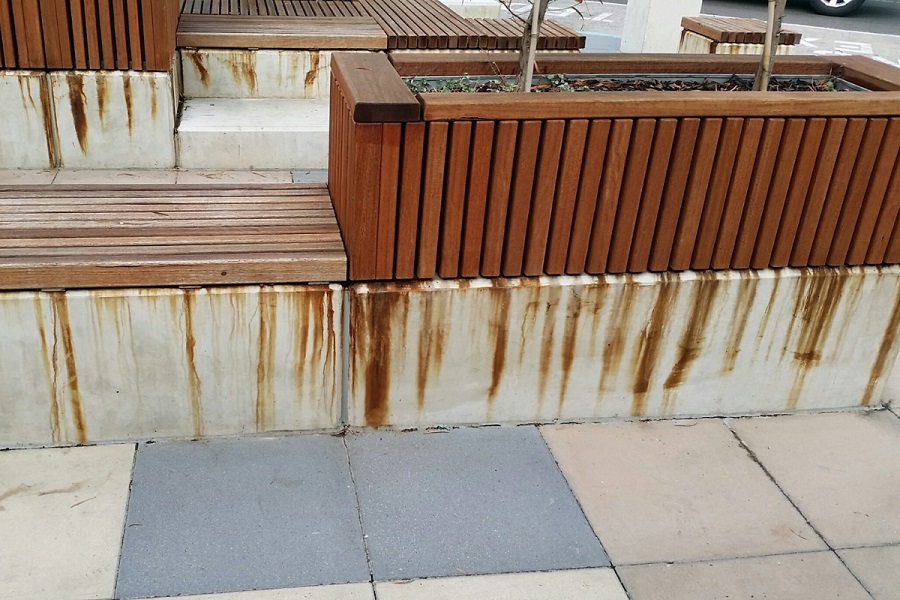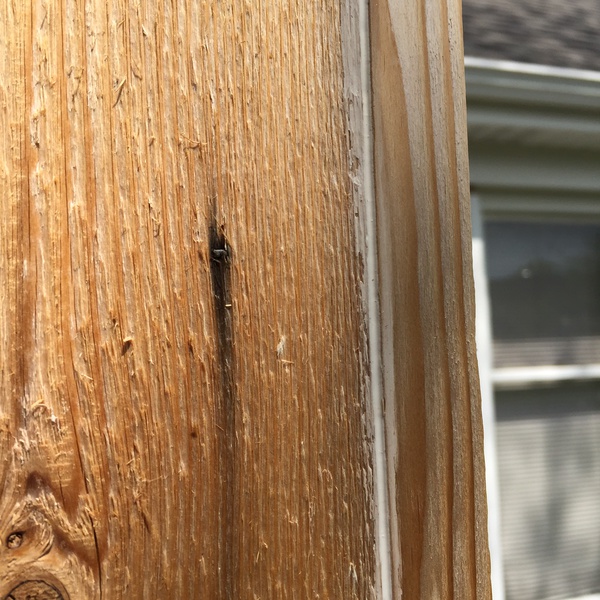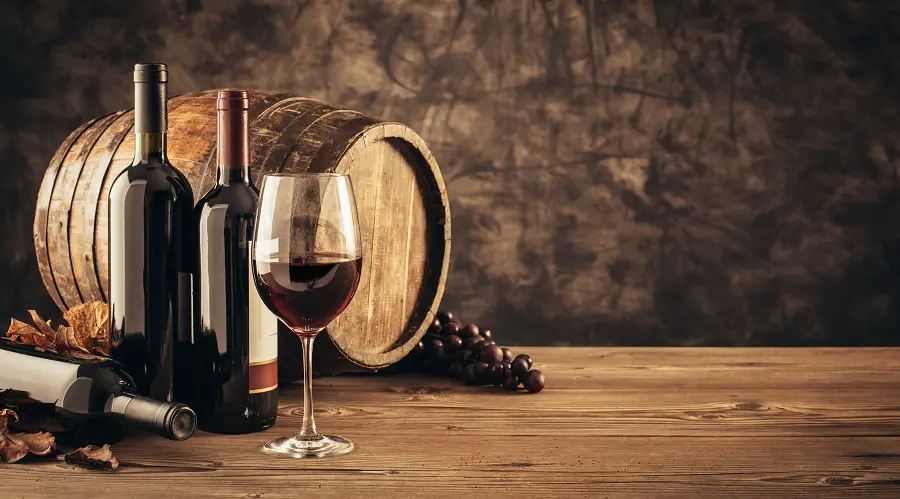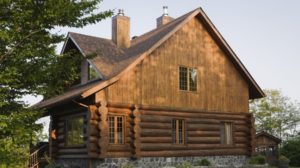In relation to tannin wood, I said that wood insulating materials should be used when finishing so that the tannin does not affect the colour or the hardening process of the materials. In another context, I mentioned that a certain staining solution is only applied to tannin wood to achieve a beautiful and intense colour. About oak and gorun I said they are good for making barrels because of their high tannin content. At first glance the information seems contradictory and it is not very clear whether it is good or not that the wood has tannin. And so the question arises: what is tannin and how is the wood's behaviour influenced by its presence?

What is tannin
Tannin is not a single substance but a mixture of complex chemicals derived from phenolic acids. This is why tannins are often referred to in the plural. They are large molecules that bind easily to proteins, cellulose (one of the main components of wood), starch and minerals. They are found in many plant species in all climates and all parts of the globe. Tannic acid, as it is also called, is soluble in water forming a brownish solution, has an astringent taste, and in solid and purified form is in the form of a yellow powder.
The name tannin comes from the Latin (tannare) and means oak bark. Tree bark has been used since ancient times to tan animal hides and hence the link. In the tanning process with vegetable tannins, due to the reaction of the tannin with various iron-based chemical compounds, the leather can also be coloured.
Tannins are commonly found in the bark of trees, but also in wood, leaves, buds, stems, fruit or seeds. Their main role is to protect the plant. Those in the bark protect the tree from infestation by bacteria or fungi. Buds and seeds contain tannins, which stop animals eating them and so ensure the continuity of the species. The raw fruits also contain tannin. The astringent taste we experience when eating raw fruit is due to the presence of tannin. It is the fruit's way of protecting itself to reach maturity. By studying the transformation of tannin in the fruit, fruit researchers can tell when is the best time to harvest.
As a general rule, wood with a high tannin content is darker. So oak tree, nuc, cherry have a higher tannin content than birch, maple or poplar. Deciduous trees have a higher tannin content, but there is also tannin in resinous trees, but the content is very low. Not only wood contains tannin. It is found in tea leaves, coffee beans, herbs such as tarragon or thyme, cloves, vanilla or cinnamon.
How a tannin wood behaves
The tannin content of the wood can be a plus or a minus, depending on what we are going to do with the wood. If we use it to make wine barrels, the tannin content is welcome because it will enrich the taste of the wine. The astringent taste we like to discover in red wine comes not only from the grapes but also from the oak barrel in which it has been aged.
If we want to use the wood outdoors or finish it with water-based products, the tannin can get in the way quite a bit. Being water soluble, it influences the colour applied to the wood if the product is water soluble. I had such an experience years ago with some acacia slats of garden furniture. I wanted to paint them white, but I didn't think about the tannin content of the acacia and didn't apply a coat of insulator initially. The tannin extraction was so fast that I hadn't even sprayed the fifth lamella and the first one had already changed colour.
This extraction of tannin in water can also be seen in wood used outside without very good protection. When it rains on it, the water that runs off turns brown. If only a portion of the house is clad, the leakage will stain the wall under the clad area or the floor. Unsightly stains may appear on the wood as coloured drips.

The acidic nature of tannin manifests itself in the presence of iron and ferrous metals. Therefore, tannin wood cannot be assembled with iron-containing metal objects, nor can it be decorated with such hardware. The properties of the wood do not suffer as a result of the reaction, but the metal object is corroded and a bluish-grey or dark blue colouring appears, staining the wood.
The reaction of tannin wood with iron can, however, be used for staining wood. To do this, use a solution obtained by placing iron filings or a metal dish sponge in vinegar for at least 24 hours. The solution is applied to the wood and, in reaction with the tannins, produces a bluish-grey colouring like that of wood that has been left unprotected outside in the sunlight. The process is described in detail here.

In order not to stain the wood and not to disturb some finishing processes, the tannin output should be blocked
To lock the tannin inside, a product called an insulator is applied to the wood. This is a kind of primer with hardener, diluted to penetrate the wood as well as possible. Hardening the isolator inside the wood blocks the escape routes and the tannin can no longer affect the next coats of finish.
This method is mainly used for tannin wood products used outdoors: oak, ash or meranti windows, garden furniture made of acacia or oak, wood for cladding. It is also recommended for products used indoors when a water-based finish is used on tannin wood or when the subsequent finish is acid-hardening (carbamide). Tannin can affect the chemical reaction between the two components and the varnish may not dry or remain soft.
Insulators are both water-based and solvent-based. The dilution is much lower for water-based ones, precisely to avoid extracting tannin from the inside. It anchors very well to the surface of the wood and hardens, and the tannin cannot escape.
Uses of tannin
The extraction of tannin from the bark of trees began as early as the 19th century with the industrial revolution. Before, bark was used as such for tanning leather and the process was very long, even 6 months, to get a well-tanned leather. In the middle of the last century, the demand for vegetable tannin fell sharply due to the advent of synthetic tannins in response to the shortage of vegetable tannins caused by the Second World War.
Vegetable tannin is still used for natural tanning of animal hides. Compared to the past, now only 10-20% of the world's leather production is made with vegetable tannins, the rest is tanned with inorganic tannins, which are easier to find and much cheaper. However, tannin extracted from the bark of oak, chestnut or exotic trees is still used for very good quality leather. Tannin is also used as a mordant (colour fixative) in the natural dyeing of cellulose fibres or to produce various colours in reaction with iron compounds.
Tannic acid is used worldwide as a wine and beer fining agent because of its ability to react with and precipitate proteins. It is also used as a flavouring and astringent ingredient in both alcoholic and soft drinks or juices. In medicine it is used as an astringent and for various other ailments.

As you can see, tannins can be very useful. And as far as tannin wood is concerned, even if their presence sometimes confuses us, they are not dangerous, and their escape or reaction with iron objects does not affect the strength of the wood. The important thing is to use the right materials to lock tannins inside.
If you have any questions or queries, you can leave them in the space below. I will certainly answer them. And I am always very happy to hear from you and thank you for your comments.



























What should we do if we have already applied the water-based paint, and after sealing the paint with transparent water-based varnish, the brown spots caused by tannin have appeared? Should we apply another sealant, then paint and then varnish again? Thank you very much
Hello!
Unfortunately, the solution is to remove the finish and start over by applying a first coat of insulation. The tannin has gone through the paint coat and you have no guarantee that it won't go through the varnish coat. Water-based varnish hardens in depth after weeks, even months. During this time there is a risk that the tannin in the first coat of paint will absorb moisture and migrate to the surface. Therefore, I don't think applying another coat of white paint over the clear lacquer would solve the problem.
Hello,
First of all congratulations and thanks for the time and energy you have spent to help us.
I also have a question, after reading dozens of posts...
I want to change the fence (horizontal wooden slats between concrete posts).
We found finished pine profiles (sanded on all faces) for the exterior.
The question is how do I finish them to last as long as possible.
I understand that linseed oil is recommended but I would like a dark shade (walnut, wenghe) at the end.
What is the order and what can I use?
Linseed oil (spicy) for impregnation + varnish / alkyd varnish in the desired shade?
Or do you wash the first layer and after drying linseed oil?
Thank you very much.
Good evening!
Thanks for your appreciation!
The finish that lasts the longest is the one that makes the film, i.e. the one that involves a final coat of varnish. There are professional systems that involve a top coat of impregnant that stains (in the desired colour) and protects the wood against mould and insects, a coat of primer and a coat of varnish, or a coat of impregnant and 2 coats of varnish, depending on the technology recommended by the manufacturer. Such finishes last 6-12 years, again depending on the manufacturer.
The trouble with such finishes is that when they fail, the finish has to be completely removed down to the wood and the whole system reapplied. That's why, especially for fencing, I think the best option is oil. Even if it lasts less - between 6 months and 4 years, depending on the product used - when the finish is weathered and the wood starts to take on a dry look, another coat of oil is applied without cleaning the old coat. Linseed oil, however, is not the best option. It has a small molecule and is easily 'washed away' by precipitation. The finish should be redone after 6 months or a year. The best are synthetic oils, tung oil, or a mixture of linseed oil and tung oil. In my opinion the best mixtures of such oils are Kreidezeit products. Kreidezeit coloured exterior oil-based lacquers last 4-5 years.
There is also a 3rd category of products that can be used - water-based waxes. These are also professional products, but their resistance is not much more than 2-3 years. As with oils, there is no need to completely remove the old coat when applying the new one.
Of the options you suggested, the best is the one with oil and alkyd varnish. Leave 2-3 days between the application of the oil and the varnish so that the wood can absorb the oil and the varnish can stick well to the wood. Excess oil that is not absorbed into the wood within 30-45 minutes should be wiped off because it does not dry but becomes sticky.
The strongest wood for outdoor use is vacuum or pressure impregnated. You can find this type of wood in specialist stores or you can impregnate the wood yourself at wood impregnation companies. One such company is in Sfântu Gheorghe, Covasna. I leave a link below to an article about this impregnation method. I also leave other links that might be helpful.
Good luck!
https://revistadinlemn.ro/2021/10/21/vreau-sa-protejez-lemnul-unei-terase-cu-produse-pe-baza-de-apa-ce-materiale-trebuie-sa-folosesc-si-in-ce-ordine/
https://revistadinlemn.ro/2020/06/10/uleiul-de-tung-uleiul-pentru-lemn-care-face-pelicula-si-rezista-foarte-bine-la-umezeala/
https://revistadinlemn.ro/2020/07/02/lazuri-kreidezeit-pe-baza-de-ulei-pentru-finisaj-exterior-natural-si-rezistent/
https://revistadinlemn.ro/2018/03/09/garduri-din-lemn-cum-se-alege-lemnul-materiale-de-protectie-sfaturi/
https://revistadinlemn.ro/2019/06/25/impregnarea-prin-presiune-in-autoclava-creste-rezistenta-lemnului-se-face-si-in-romania/
Hello,
Thank you very much for your prompt reply.
I will take your advice and use KREIDEZEIT precoloured wood varnish.
Are two layers enough? Is there anything else to be applied beforehand?
Have a nice day!
Good evening!
Nothing needs to be applied beforehand unless you want extra protection against fungi and insects. In this case the protection should be applied first, left for 2-3 days to dry and then the varnish applied. A good preventive solution is Bochemit.
2 layers of lazure are sufficient.
All the best!
Hello,
Thank you for your patience. I purchased old (70-80 years old) oak plank from a dismantled house and after removing the dirt and dust from it I came across the stains formed by the tannin. My question would be whether one can somehow wash this tannin off the plank or sand it so as to preserve the beauty of the imperfections in the wood (axe marks, streaks from cutting etc)
Hello!
The tannin is water soluble, a wash can be tried, as with barrels. Don't overwater to avoid swelling of the wood. Then leave it to soak.
You can also try sanding lightly so you don't remove the imperfections you appreciate. The tannin came out in contact with the water and only stained the wood on the outside. On the inside it stays clean with no problems.
Thank you for your appreciation too!